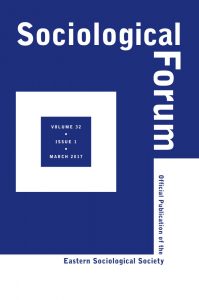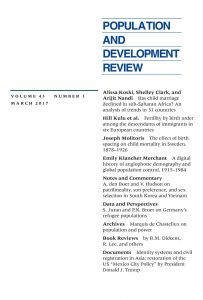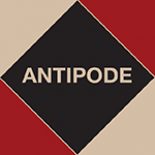Neurodiversity and Queer Phenomenology: Reflections from Life-Writings

Neurodiversity is a concept that recognizes neurodevelopmental disorders as natural variations of the human brain. The sexual politics of neurodiversity, which is often overlooked, sparked interest in our recently published research. In contrast to neurotypical persons, evidence suggests that neurodiverse individuals, particularly those on the autism spectrum, are more likely to be gender diverse and to have a lesbian, gay, bisexual, queer, or asexual sexual orientation (George & Stokes, 2018). The causes of this overlap are numerous, but one explanation is that people who are neurodiverse tend to be less conscious of or vulnerable to societal pressures and gender norms, allowing them to express their gender identity or sexual orientation without fear of judgement or having to fit into preconceived notions (Ehrensaft, 2018).
With classifications like autistic spectrum disorder and gender dysphoria, which can be pathologizing and may not match how individuals interpret their own experiences, much of the previous research has tended to be largely diagnostic. Therefore, our research employed a phenomenological framework to seek reality from individuals’ narratives of their experiences and feelings and to produce in-depth descriptions of the phenomenon. By navigating through the discursive history of sexuality, our study turns toward “Queer Phenomenology” to understand how queer autistic women disrupt the existing social relations and reorder them by not following the accepted paths. Houghtaling’s (2013) viewpoint is particularly relevant in the present study of queer neurodivergent women because she argues that sexuality as a self-project and the dialectical becoming between the sexed body and the sexual self is open to instability and change. A queer phenomenological understanding gives us a place to start when imagining “neuroqueering” as a form of resistance against these spaces. It also enables us to recognize from a critical standpoint how bodies that can’t or won’t align within these spaces will always be transgressive and read as “other,” and thus “queered.” For Walker (2015), neuroqueering is enacted by autistic persons through discussions and theorizations of the meaning of their autistic identity as well as through purposeful and inadvertent embodied statements of their autistic identity.
Our study focused on the life-writings of queer neurodivergent women to reveal to what extent it depicts aspects of sexuality, consent, and relationships in a non-heteronormative way. For this purpose, three recently published memoirs were chosen- Uncomfortable Labels: My Life as a Gay Autistic Transwoman (2019) by Laura Kate Dale, How to Be Autistic (2019) by Charlotte Amelia Poe, and Ten Steps to Nanette: A Memoir Situation by Hannah Gadsby (2022). Laura identifies as a gay autistic transwoman, Hannah’s memoir depicts their diagnosis of ADHD and subsequently, autism during adulthood, and Poe’s memoir narrates the journey of getting an autism diagnosis and identifying as a bisexual non-binary person.
The insights from queer phenomenology and neuroqueering were employed to carry out a narrative analysis of the memoirs which identified the following themes:
- Understanding Sexuality
- Sexual Victimization
- Intimacy
- Misunderstandings and miscommunications in relationships
Our study explains the difficulties faced by the authors in understanding and coming to terms with their sexualities. ‘Laura’ already had significant discomforts associated with autism and body disconnect, but it intensified when she had trouble identifying to which gender, she is sexually attracted. ‘Hannah’ (they/them) was born and brought up in a background where homosexuality was considered a crime. This made them repress their lesbian identity. ‘Poe’s’ (they/them) journey was also challenging since they believed themselves to be bisexual for a significant period, only to find out that they align more towards an asexual identity.
Under the sexual victimization theme, it is understood that Laura and Hannah experienced sexual abuse since childhood. According to Laura’s account, transwomen are perceived as either “men” or “women” depending on the predator’s needs, and transwomen are assumed to be heterosexual in terms of sexual orientation. Hannah narrates how heterosexual men manipulated and abused them which pushed them into trauma. The intimacy theme is very significant in this study because it disrupts the predominant notion that autistic individuals are not capable of maintaining intimacy in relationships. Hannah’s relationships face some of the challenges that typical relationships do, with some added difficulties. Towards the conclusion of her memoir, Laura mentions how happily she lives with her fiancé in a beautiful part of the country. After going through so many troubles due to her intersecting identities finally, she is able to find the love of her life who accepts her for who she is. Therefore, these women neuroqueer mainstream deficit narratives about autism and intimate relationships.
Neuroqueer theory emerged as a result of connections other disability theorists found between queer theory and identity-fracturing, identity-constituting neurodivergence (Koloni, 2019). The three authors view autism as a valid neurotype and accept how they are created and sustained by autism. Laura’s memoir can be read as taking a neuroqueer turn in both gender and sexuality. Here Laura has subverted every nuance of compulsory heterosexuality and able-mindedness through practices of disidentification while being a transgender woman. Hannah’s memoir also takes a neuroqueer turn in sexuality even though it took a considerable amount of time for Hannah to come to terms with their lesbian identity which can be understood as their painful queer struggle under the weight of Tasmanian homophobic culture. In other words, they were disoriented by the sense of lacking direction as a consequence of a dominant culture that places them outside the established heteronormative orientation that rules their socio-cultural context. Poe’s memoir is also an excellent narrative for understanding sexuality among neurodivergent women, what are they attracted to, and most importantly, how sexuality can be fluid.
In understanding their sexuality, all three women share an experience of multisided exclusion. But they chose to point out exclusion, reject it, and strategize against it. Though the sensory responses and challenges due to autism interfered with their relationships, their narratives show that they are able to maintain relationships and friendships. They also chose to speak about how they were made victims of sexual assaults and still, they managed to get out of it. Most importantly these queer autistic women chose to write their story in a world where able-mindedness and heterosexuality are the gold standard. The autistic queer authors are neuoqueering in the sense that there is an intentional pushing and twisting of boundaries of social meaning, just as queer identity and practices of queering do. By neuroqueering, they undermine any forms of binaries and exclusionary practices and therefore deconstruct the very foundation of ableist, heteronormative hierarchies. Through deliberate acts of defiance, they liberate themselves from social normativity, which is neuroqueering. Given the under-awareness of this in the literature, we can obtain an appreciation of their experiences within knowing and exploring their sexualities from the insights we glean from the narratives of queer autistic women.
References
- Amrutha, S. L., & Christie, L. G. (2023). Neuroqueering sexuality: Learning from the life-writings of queer neurodivergent women. Sociology Compass, e13181. https://doi.org/10.1111/soc4.13181
- Ehrensaft, D. (2018). Double helix rainbow kids. Journal of Autism and Developmental Disorders, 48(12), 4079-4081. https://doi.org/10.1007/s10803-018-3716-5
- George, R., & Stokes, M. A. (2018). Gender identity and sexual orientation in autism spectrum disorder. Autism, 22(8), 970-982. https://doi.org/10.1177/1362361317714587
- Houghtaling, M. K. (2013). Materiality, Becoming, and Time: The Existential Phenomenology of Sexuality [Doctoral dissertation]. https://qspace.library.queensu.ca/handle/1974/7805?show=full
- Koloni, R. (2019). Neuroqueering Gender [Master’s thesis]. https://scholar.umw.edu/student_research/372/
- Walker. (2015, May 4). Neuroqueer: An introduction, by Nick Walker. NeuroQueer. https://neuroqueer.blogspot.com/2015/05/neuroqueer-introduction-by-nick-walker.html







